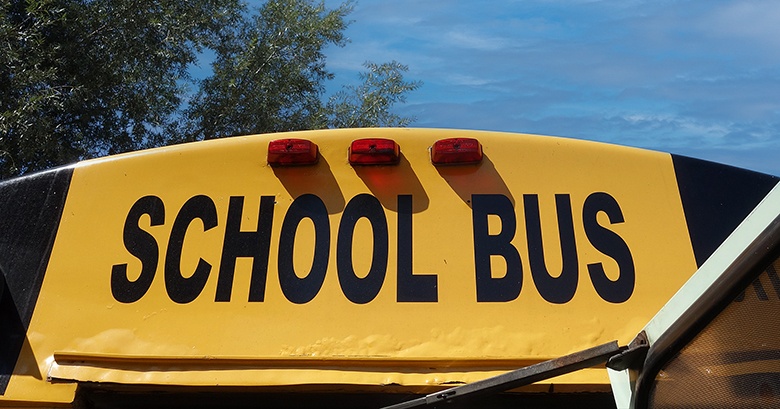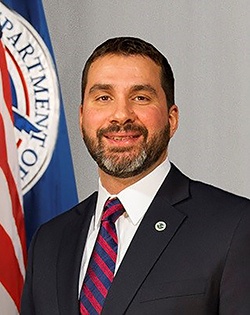
School BUSRide spoke with David Cooper, industry engagement manager for the U.S. Department of Homeland Security (DHS) and the Transportation Security Administration (TSA), about the role of DHS/TSA in pupil transportation, the many programs which are specialized for pupil transportation, and how school bus professionals can be proactive in security matters.

Tell us a little about your professional role at DHS/TSA, and how the agency views its responsibility in assisting the school bus industry to ensure pupil transportation is as secure as it can be as part of our educational system.
One of TSA’s roles as the security co-lead with our DOT colleagues is to ensure that we engage directly with our industry partners to enhance security of the Transportation Systems Sector. To do this, TSA has what we call “Industry Engagement Managers” for all modes of transportation (i.e. aviation and surface). I have been the IEM for the Highway and Motor Carrier sub-sectors for the last decade and have responsibility for engaging with industry and their representatives nation-wide for pupil transportation, trucking, over-the-road bus, and highway transportation infrastructure. Over the years this has provided the opportunity to work directly with the school bus industry to share important security information, conduct training and exercises focused on many different security scenarios across the physical and cyber space, and work directly with the industry to develop and implement necessary security measures to protect their specific communities.
TSA has many programs available for transportation departments to take advantage of and we would like to know more about those programs and how our members can take advantage of these opportunities. The recent “surprise” inspection of school buses at a school in Flagler, Florida, caught our attention. The transportation director collaborated with you on the exercise, but drivers were not alerted ahead of time. When they showed up for their shifts, they encountered a variety of security challenges, like suspicious packages on their buses. We understand this is part of something DHS/TSA calls “Security Enhancement Through Assessment (SETA).” Please tell us more about this program from your standpoint.
TSA has a number of programs and opportunities for transportation departments to engage on with TSA covering training, exercises, assessments, security planning, and the like. A couple of examples include our Baseline Assessment for Security Enhancement (BASE) to assess the current level of security and provide recommended actions, SETA to assess/test those implemented measures, exercises through our Intermodal Security Training and Exercise program (I-STEP), security planning workshops, and other programs. To contact TSA and schedule engagement opportunities at the state and local level please visit TSA’s website at tsa.gov and follow the industry link and surface resources link to contact TSA and request your specific region’s point of contact.
For those of us who work in the K-12 education system, safety and security is fresh on everyone’s mind. There is an ongoing investigation of the recent tragedy in Uvalde, Texas, so we are not asking you to discuss that specific situation. But speaking solely about what might be done generally to make school transportation, especially school buses themselves as well as the facilities where they are stored and maintained, as secure as possible, what actions would you suggest?
Be proactive…DHS and TSA have a significant volume of resources that can be found through their respective websites to prepare and protect against scenarios including active shooter, cyber-attacks, vehicle ramming, and many other topics of interest. I would encourage everyone to review these resources and reach out to DHS and TSA at your earliest convenience to begin the process of establishing these important partnerships with your local and national points of contact to access these resources and opportunities to enhance security in your environment.
DHS/TSA has recently collaborated with NAPT, the American Association of School Administrators (the school superintendents association), and the Association of School Business Officials International on a project centered on cyber-security in the K-12 market space. School superintendents and school business officials don’t seem like traditional transportation security partners. How did this project come about? Was this a “one-of” for DHS/TSA or are you expanding your scope?
TSA has many examples of leveraging its many programs, including the I-STEP, to bring together partners that may have a vested interest in working together to enhance security within their environments. What I mean by that is whether we connect through a national-level effort, like we did in this case with the cyber-security exercise in the K-12 market space, or we work through our state-level or local partners, the idea is to bring people together to raise awareness of potential security threats or identified vulnerabilities in their system, discuss and collaborate on mitigation strategies and actions to counter those threats and mitigate those vulnerabilities, and provide additional resources to assist our partners in maintaining an advanced security posture to protect the overall transportation systems sector. This particular event came about by bringing together TSA and NAPT officials with long standing relationships to have an open discussion of how we approach addressing this important issue. In the end, it’s about bringing together those with that vested interest I mentioned earlier and brainstorming on how we collectively address a specific topic. One thing that I take pride in is that TSA is very open to partnerships through collaboration. At the end of the day, we all share the same goal to protect our transportation systems sector and our nation as a whole.
Are there any other thoughts or suggestions you would like to add?
Again, I think the key is for school bus industry officials and representatives to be proactive and take advantage of all of the available resources and opportunities. DHS and TSA as well as other federal agencies have regional and local points of contacts to partner with to prevent and protect your sub-sector against both man-made and natural disasters. If help is needed in identifying your local contacts, please do not hesitate to reach out to me through the NAPT. I would be happy to help make the connection and put the wheels in motion for a safer and more secure school bus industry.


